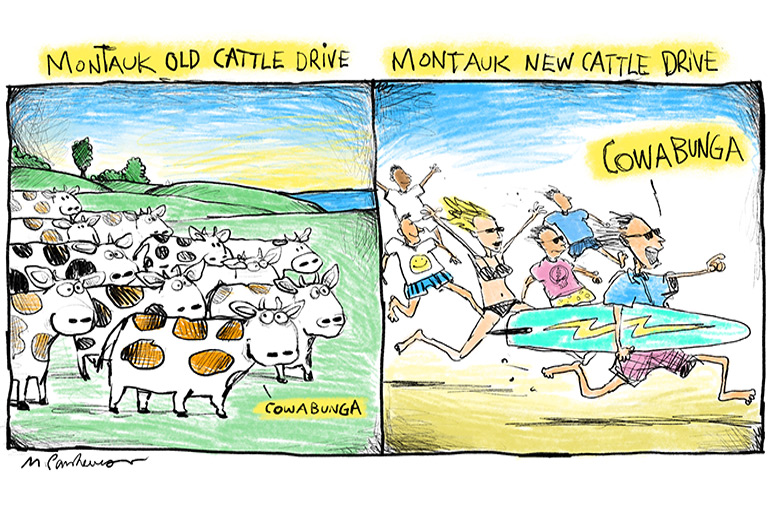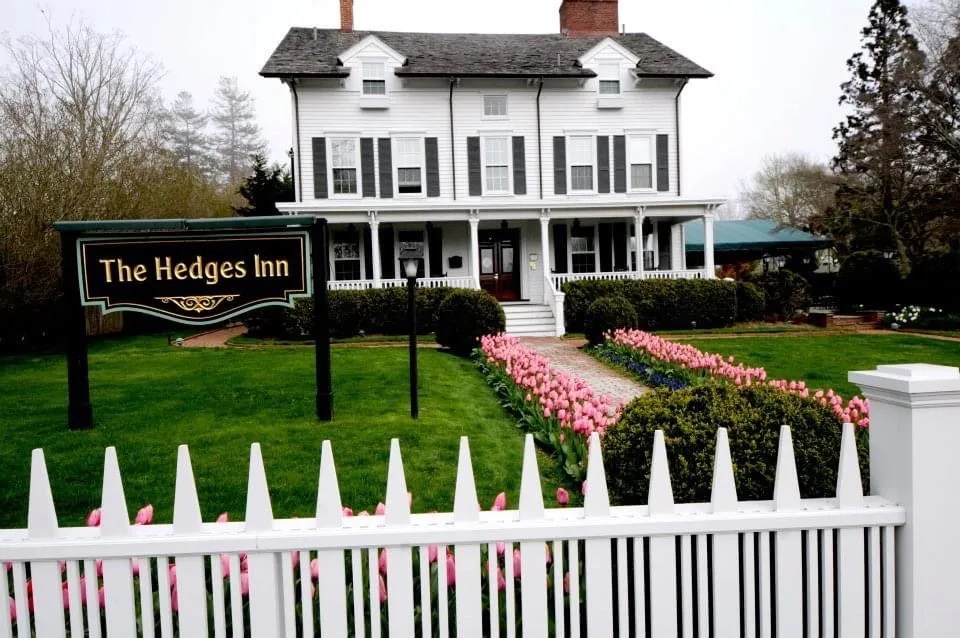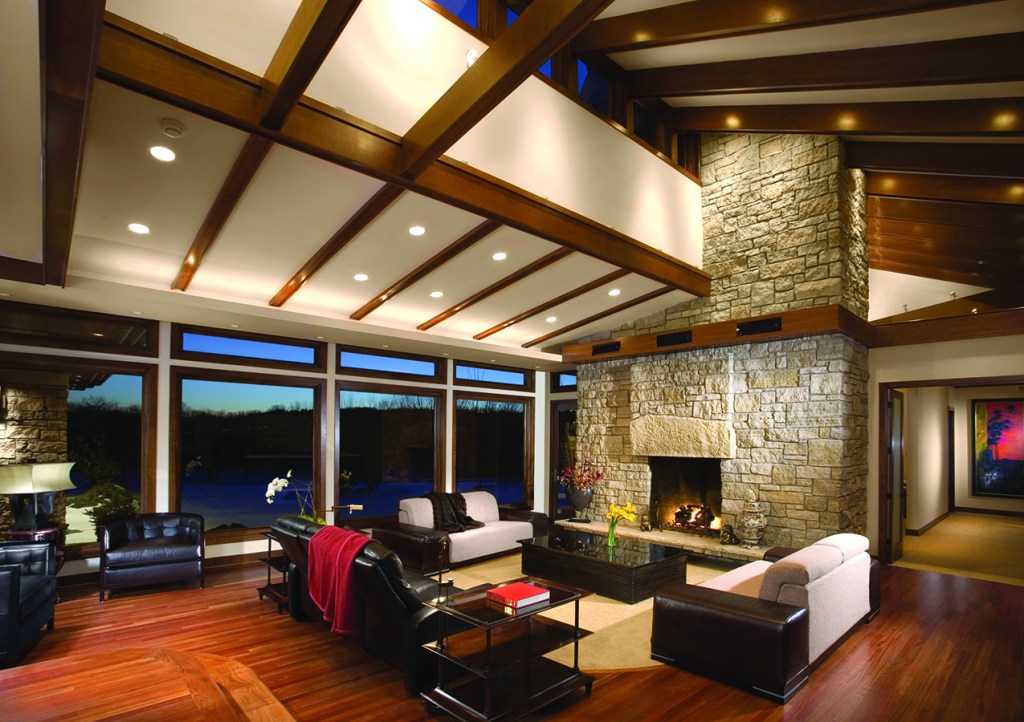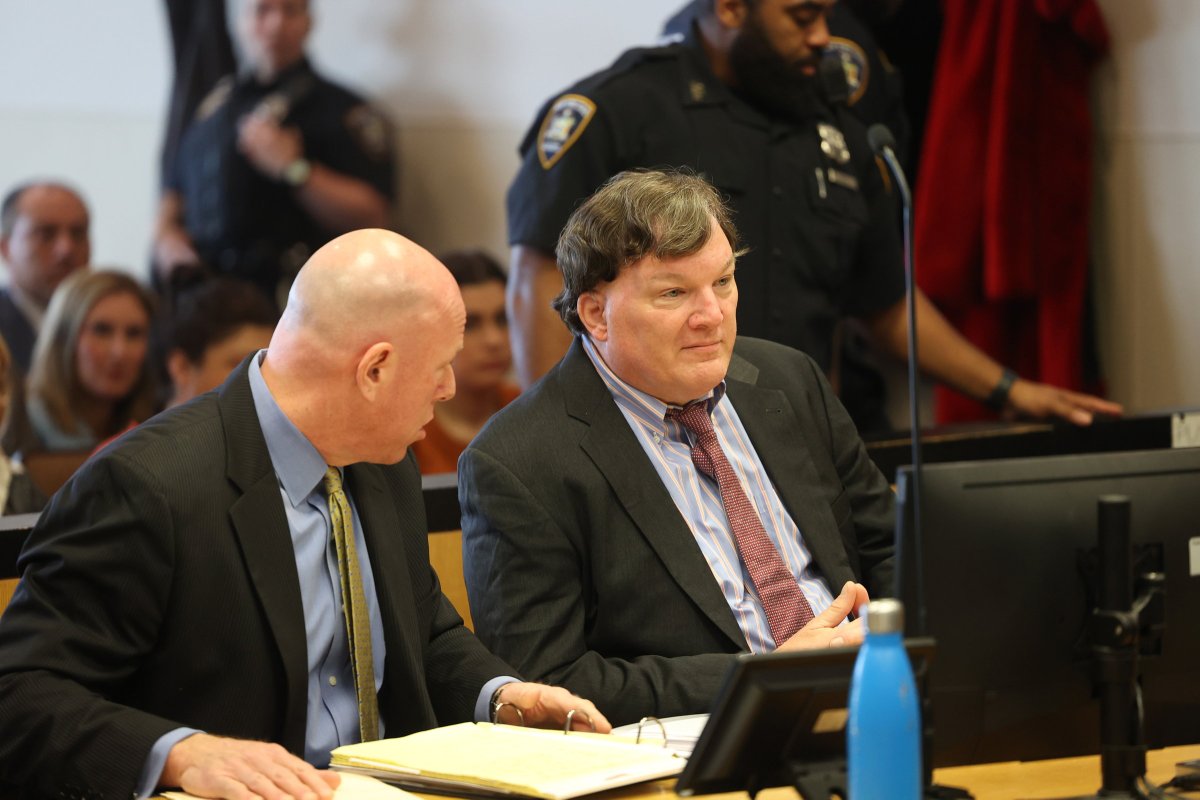Montauk Museum Repairs: Second & Third House, Teddy Roosevelt Park?

We all know what a “teardown” is. It is an old house, usually quite small and well worn, that has to go to make way for a 10,000-square-foot McMansion in the Hamptons. The wrecking ball and bulldozers come in. They make short work of the “teardown.”
Well, now there has been an announcement about a house in the Hamptons that will be “built down.” It is old and worn and quite small, but over the years additions and porches have been added. They are to be torn off to restore this small old house to the size it was in 1886. Surprise!
The house in question is Second House, built 275 years ago and now the oldest house in Montauk. It is also located right at the entrance to town, across from the Welcome to Montauk sign by Kirk Park. It’s owned by the Town and is not in use because of its shopworn condition. But now Ronald Webb Builders LLC of East Hampton, has been contracted to tear off the additions and porches, restoring it to what it once was. The price for this renovation is a reported $453,442 and the contract was signed four days before Christmas.
In the late 1600s, the English settlers living in East Hampton began driving all their sheep and cattle out to Montauk in the summertime to be fattened up on the warm, sweet grass that grows throughout the rolling hills of that place. About 100 families lived in East Hampton then, having built small saltbox homes on a broad Main Street there and elsewhere. The livestock would be rounded up in a real Wild West scene on a sunny day in May and herded 15 miles east to graze on the 10-mile peninsula of Montauk. Fattened up, they’d be driven back to the farms and ranches in the fall for slaughter so the settlers could get through the upcoming hard winter with wool clothing and cuts of meat.

This annual roundup continued for 200 years, with the last cattle drives taking place in 1879, when all of Montauk was auctioned off by the East Hampton residents who owned Montauk in common, to the winner, Arthur Benson, a Brooklyn millionaire. Benson wanted to have Montauk as a private hunting and fishing preserve for himself and his family.
Included in the sale to Benson were three houses, the only three houses in Montauk, where shepherds lived during the summer to manage the herds and fix fences. The houses were named First House, Second House and Third House. The shepherds were required to work two and a half days a week, mending fences and gates and tending the sheep and cattle in their separate pastures. First House was where Hither Hills State Park is today, but it burned down in 1905. Three miles east was Second House. Third House was still another three miles further on. All three homes also served as inns for weary travelers coming onto Montauk by horseback or stagecoach.
Though First House is gone, both Second and Third House still stand, each in difficult circumstances. For many years, both had been open to the public as museums after their time as shepherd’s homes ended. But in the last 10 years, both houses, for different reasons, have become off limits to the public. Both, for use as museums, need to be re-opened again. And apparently Second House will be the first to do so.
The stories about both houses are fascinating.
When Arthur Benson bought Montauk, ending the cattle drives, he ordered Second House expanded with additions for himself and his guests. There’s no record of what it cost. But the original building of Second House was paid for with three gallons of rum.
At the time of the Benson purchase in 1879, there were four structures at Montauk, not three. Eighty-eight years earlier, shortly after the founding of our nation, President George Washington ordered a lighthouse built at Montauk Point. It was in use beginning in 1796. So, four English settler families occupied Montauk, the three shepherd’s families and the keeper’s family at the lighthouse. Benson could do nothing about the lighthouse. It was on federal property. But he ordered the cattle drive ended, and, by 1889, the three house-keepers gone. He also ordered all the Indians in Montauk, a tribe dwindling down from diseases they caught from the English settlers for which they had no defense, to leave. They were small in number by then. Benson paid each Indian family $50 to move to a “new tribal land” in Oneonta, New York.
Benson died in 1889, and in 1909 Second House was sold to become a summer home for David E. Kennedy, the owner of a New York asphalt company. His descendants then sold Second House in 1968 to Town of East Hampton for $75,000 so it could become a museum of what settler life was like. It quickly became a popular destination for visitors. But, just five years ago, Second House had to be closed down for repairs, as it was getting too dilapidated.
To restore it, the Town looked for funding from the federal government because of the historic nature of this old house, but none was forthcoming. Second House no longer resembled what it looked like when shepherds lived there, they were told. So now that is going to change. When Ronald Webb Builders gets done with it, it will be restored to its former glory, to look as it did in 1886 before Benson shooed out the last keeper, George A. Osborne. At its position in Kirk Park at the entrance, it will be a welcome facility again for visitors.
Third House has had a much more spectacular history than Second House, and after it was stripped of all its furnishings 10 years ago during a renovation, it remains closed to the public, surely a great disgrace.
In August 1898, 30,000 soldiers of the U.S. Army came by ship to Montauk from Cuba, Puerto Rico and Florida to recover from injuries and illnesses suffered during the just-ended Spanish-American War, while at the same time celebrating their victory. They lived in thousands of white tents. Third House was General Wheeler’s headquarters, and Teddy Roosevelt and his Rough Riders were here, encamped in tents down by Ditch Plains. President McKinley visited Roosevelt in his tent and Wheeler at headquarters. Roosevelt’s wife and children came out to visit one weekend and slept at Third House, where Teddy joined them. The Army left Montauk by October. And two years later, Roosevelt was President of the United States.
In the Roaring ’20s, the only gunfight between rival gangs that ever took place in the Hamptons occurred at Third House in Montauk one midnight. Five hijackers attempted to steal about $10 million (in today’s money) worth of bootleg liquor being watched over by eight rumrunners on that night. An estimated 30 shots were fired. Two people were wounded before it was over, and both were treated around 4 a.m. by a Dr. David Edwards, who met them at his East Hampton office at that hour. Two days later, state troopers came to where all the cases of liquor were stored in the west wing of Third House and around it in swamps and garages, and, using crowbars and sledgehammers, smashed it all into broken glass.

Third House had become by that time Deep Hollow Ranch, known as “the Oldest Cattle Ranch in America.” Guests stayed there, rode horses, shot skeet. The house was decorated with paraphernalia from the time of the Spanish-American War and it was open to the public. Dinner was served in the main dining hall.
In 1985, Third House and its surrounding 1,200 acres were purchased by Suffolk County and renamed as Theodore Roosevelt County Park in 1997. You could camp there, and you could tour the main house.
In 2006, however, Third House closed for repairs, and virtually all of the paraphernalia was removed for safe keeping. It has never been returned. After the major repairs were completed, the Town Fire Marshall inspected the place and declared it unsafe for public use unless further repairs were made. There were still structural problems, and fire suppression sprinklers needed to be installed. At the present time, that work has not yet been done.
Today the cupboards are bare at Third House. Also, quite sadly after the renovation, the county renamed Theodore Roosevelt County Park so it is now Montauk County Park.
It is a shame today that nothing in Montauk of any consequence honors Teddy Roosevelt’s time here. Third House should be back as a tribute to Teddy. Photos and paraphernalia from the era can be found.
If that won’t work, New York State should consider building a replica of the Rough Riders tents and encampment for visitors to visit. It makes perfect sense in Ditch Plains or the state’s Shadmoor State Park, just adjacent to Ditch Plains. How about it?



